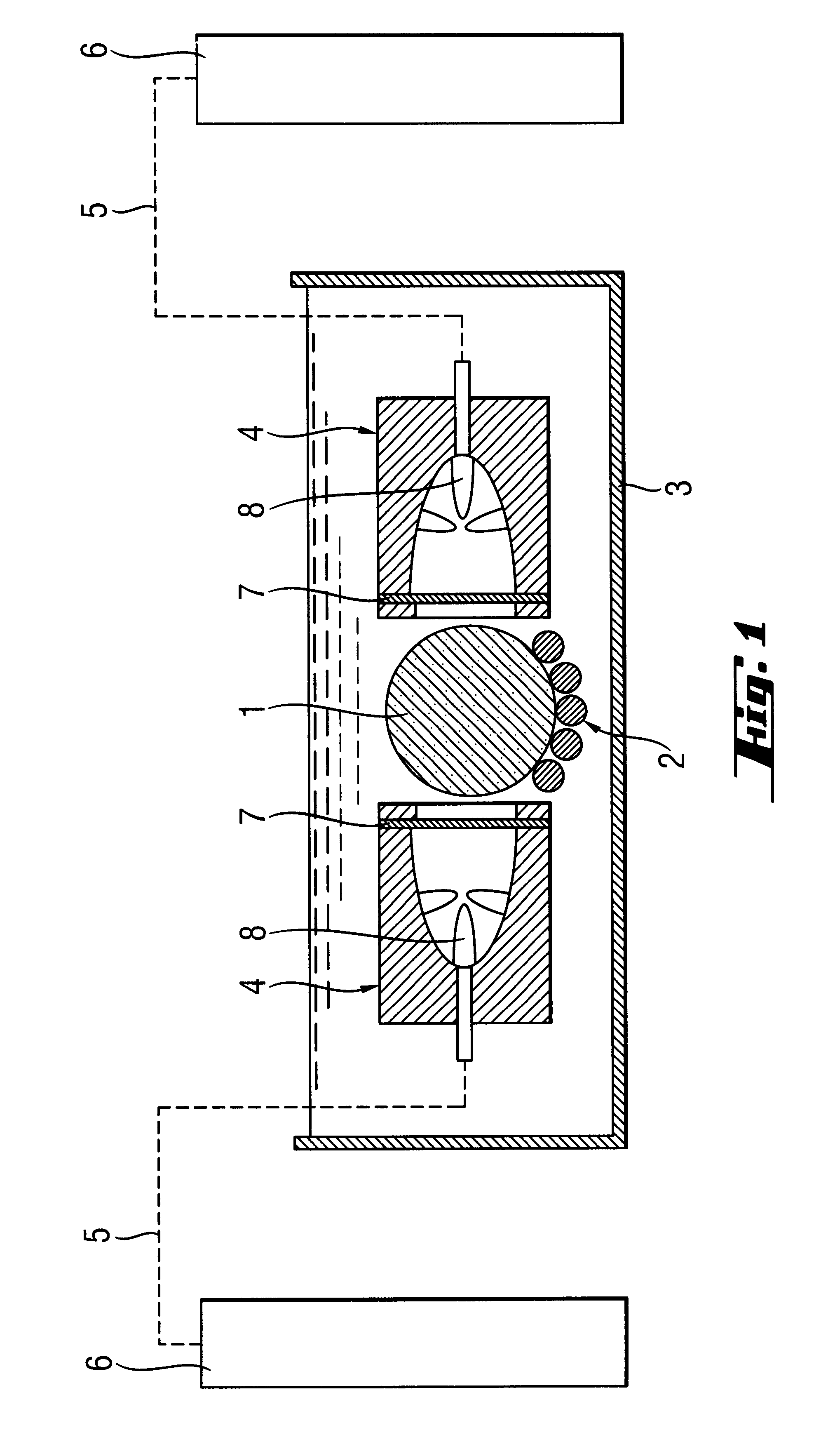Method for processing semiconductor material
a technology of semiconductor material and processing method, which is applied in the direction of grain treatment, manufacturing tools, cleaning using liquids, etc., can solve the problems of inability to re-focus each individual fragment and reduce its size even further, and the gradual comminution by repeated application of low-energy shock waves is not suitable for the comminution of semiconductor materials
- Summary
- Abstract
- Description
- Claims
- Application Information
AI Technical Summary
Benefits of technology
Problems solved by technology
Method used
Image
Examples
example
A piece of a polycrystalline silicon ingot 1 from a deposition system was fully immersed on a support made of polysilicon rods 2 in a water-filled tank 3. At a distance of 2 cm from the ingot surface, two semiellipsoidal reflectors 4 are positioned in such a way that they form an angle of 180.degree. with each other. The silicon ingot 1 is lying mid-way between the semiellipsoidal reflectors. The semiellipsoidal reflectors 4 are connected to the associated power supply devices 6 via supply cables 5.
A shock wave pulse with a pulse energy of 12 kJ and a pulse length of 3 .mu.s was generated by striking an arc between the electrodes 8 of the semiellipsoidal reflector. The shock wave passes through an elastic diaphragm 7 to the surface of the silicon ingot 1. The position of the ingot in the tank was chosen in such a way that it at least approximately coincided with the focusing area of a semiellipsoidal reflector. The piece of ingot exposed to the shock wave had a diameter of 190 mm an...
PUM
| Property | Measurement | Unit |
|---|---|---|
| distance | aaaaa | aaaaa |
| pulse energy | aaaaa | aaaaa |
| distance | aaaaa | aaaaa |
Abstract
Description
Claims
Application Information
 Login to View More
Login to View More - R&D
- Intellectual Property
- Life Sciences
- Materials
- Tech Scout
- Unparalleled Data Quality
- Higher Quality Content
- 60% Fewer Hallucinations
Browse by: Latest US Patents, China's latest patents, Technical Efficacy Thesaurus, Application Domain, Technology Topic, Popular Technical Reports.
© 2025 PatSnap. All rights reserved.Legal|Privacy policy|Modern Slavery Act Transparency Statement|Sitemap|About US| Contact US: help@patsnap.com

